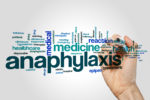In this video, we look at how you treat a patient who has fainted or someone who may faint. When safely on the floor, raise their legs 30 cm to help blood get back to their vital organs.
Types of Shock
Hypovolemic Shock
Caused by significant loss of blood or body fluids, leading to decreased blood volume. Common causes include severe bleeding, dehydration, diarrhoea, vomiting, or burns.
Neurogenic Shock
Results from a disruption in the autonomic nervous system, often due to spinal cord or traumatic brain injuries. This leads to severe hypotension (low blood pressure) and bradycardia (slow heart rate).
Cardiogenic Shock
Occurs when the heart is unable to pump sufficient blood to meet the body’s needs, often triggered by a major heart attack. Not all heart attacks result in cardiogenic shock, but extensive heart damage can impair its function.
Anaphylactic Shock
A severe allergic reaction to substances such as food, insect stings, or medications. It requires immediate treatment due to its life-threatening nature.
Causes of Shock
Shock can be triggered by various factors, including:
- Severe internal or external bleeding
- Loss of body fluids through dehydration, diarrhoea, vomiting, or burns
- Severe allergic reactions (anaphylaxis)
- Infections leading to septic shock
- Spinal cord or traumatic brain injuries
Symptoms of Shock
Common signs and symptoms include:
- Rapid and shallow breathing
- Weak pulse
- Sweating
- Pale, clammy, and cold skin
- Blue-grey colouring around the lips and extremities
- Weakness and dizziness
- Nausea or vomiting
- Restlessness or aggressive behaviour
- Thirst, yawning, and sighing
- Potential unresponsiveness in severe cases
First Aid Treatment for Shock
- Call Emergency Services: Dial emergency services immediately upon recognising signs of shock.
- Address the Underlying Cause: For example, control any external bleeding promptly.
- Position the Person: Lay them down and elevate their legs by 15 to 30 centimetres to aid blood flow to vital organs, unless contraindicated by other injuries.
- Maintain Body Temperature: Keep them warm using a blanket or coat.
- Reassure and Monitor: Provide comfort, monitor vital signs, and be prepared to perform CPR if necessary.
- Avoid Food and Drink: Do not give them anything to eat or drink, as this could complicate medical interventions.
Further Resources
Expand your knowledge on shock and related first aid topics:
For comprehensive first aid training, enrol in our First Aid at Work Annual Refresher (VTQ) course.



